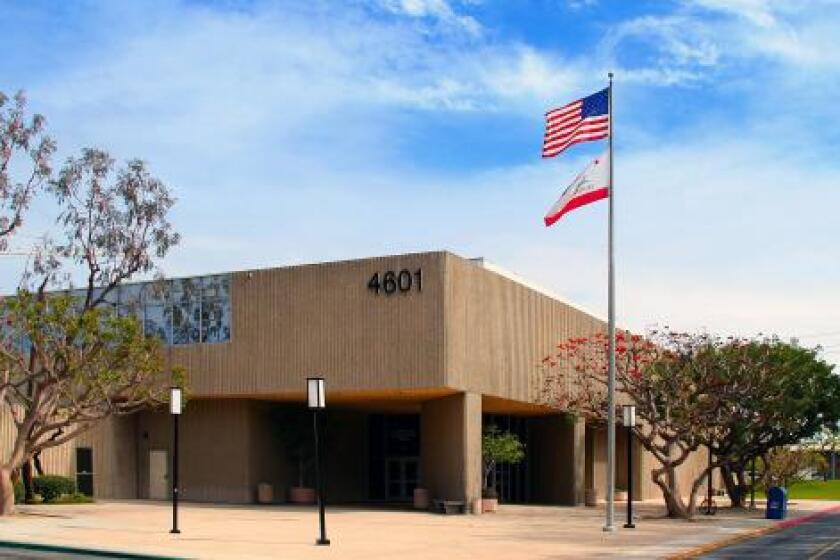How to save gas
- Share via
ne thing is clear when it comes to rising gas prices: they’re going to keep on rising. We can’t do much about that, so to save money we need to be concerned with what we are in control of: the way we use it.
The following are key strategies for keeping gas in your tank, and cash in your wallet... straight from the experts.
Lighten your loafers
The single biggest change you can make to your gas consumption is easing up on the throttle, especially those “jackrabbit starts” coming off a red light. Getting your vehicle up to speed in a big hurry uses more fuel, plain and simple,because it takes more force. And that’s in proportion to the weight of your vehicle. The heavier it is, the more energy it takes to bring it up to speed.
What’s the big hurry? Gentle, steady acceleration (and deceleration, too) will give you the most bang for your fuel buck.
Be a kinder, gentler driver
The road is no place to demonstrate your skill with evasive manoeuvres, or prove to the world why they should have cast you in Days of Thunder instead of that Tom Cruise guy. Dial it back a notch or two: instead of weaving in and out, darting, accelerating and squealing your tires, use some common sense . . . and maybe your cruise control while you’re at it. Anticipate what’s coming down the road, leave room between you and the car ahead, avoid emergency stops, and watch the speed limit. The difference in fuel consumption at 60 mph versus 70 is substantial, so slow down.
“It’s the opposite end of the spectrum from road rage,” said Tom Gross, Deputy Assistant Secretary for Transportation Technologies with the U.S. Department of Energy.
Simple changes in driving habits can create a 10-percent improvement in economy, he says.
“There’s a tremendous benefit nationwide,” he adds, pointing out that if everyone cut their fuel consumption by 10 percent, it would save close to one million barrels of oil a day. That, he says, would help ease the growing demand that’s helping drive up the price of gas in the first place.
Andy Acho agreed that it doesn’t take a lot of effort to get big savings.
Acho is the former head of Environmental Outreach and Strategy for Ford Motor Co. He said studies in Germany show that people who practise “eco-driving” can boost efficiently by as much as 25 percent.
“If you had 15 or 20 percent more efficiency, you’re going to save about $200 a year without sacrificing anything.”
Maintain and maintain
Easing up on the gas and brakes is not all you can do to squeeze every last drop out of your tank. A poorly tuned engine can increase fuel consumption by as much as 10-20 percent, depending on a car’s condition. So keep your car in shape with clean oil, a clean air filter, regular tune-ups and proper maintenance according to the manufacturer’s recommendations.
Proper tire inflation is another issue. Low pressure — even by a few a pounds — causes significant added rolling resistance, which takes more power and fuel to overcome.
Incidentally, keeping on top of the maintenance has two other benefits: the car won’t give off as much pollution; and — get this — it might actually work when you want it to.
Idle time
Idling is another enemy of the fuel-conscious. Acho says if you’re going to be sitting for more than 30-45 seconds, it’s worthwhile to turn off the engine.
In fact, the same goes for turning the engine on: modern cars don’t need to sit and warm up before you drive them, said Greg Dana of environmental affairs for the Alliance of Automobile Manufacturers, a group of 10 major automakers, based in Washington, DC.
“You should get in your car and start off moderately,” he said.
“You don’t want to accelerate with a wide-open throttle when the engine’s cold.”
“But by driving the car, you’re warming up everything that needs to be warmed up.
“I wouldn’t idle it at all. It wastes gas, and it doesn’t help the engine.”
The bottom line is that while we could all complain about the price of gas, we would be far better off concentrating on how we use it.
Towing to save
When you’re driving a motorhome or towing a trailer, fuel efficiency can get downright ugly if you’re not careful.
Tom Gonser is editor and publisher of www.rversonline.org, an Internet newsletter devoted to RV-
ing. His site offers an in-depth look at fuel economy. Gonser offers these tips:
• When it comes to the large, heavy, high silhouette of the “big rigs,” the key to fuel economy is speed, Gonser says. “If you’re careful about your driving speeds, you can still achieve reasonable mileage for its size.”
• The best bet is a moderate speed. At 50 mph, a motorhome might average 14 m.p.g. But take it up to 70 mph, and fuel efficiency can plummet to 8 mph Gonser tries to keep to about 55 mph (or even 45-50 mph) whenever he can, even if the speed limit is higher. But he cautions drivers to balance that against the flow of traffic. Driving too slowly can be as hazardous as driving too fast.
• As with cars, gentle acceleration is also key. Look ahead, gauge the upcoming traffic, and try to coast and anticipate as much as you can so you don’t waste energy coming down hard on the brakes.
• Avoid high winds: that goes for both side winds and headwinds. Many RV enthusiasts take along laptop computers to keep on top of daily weather forecasts and wind conditions.
Catrina Coghill is a feature writer with Wheelbase Communications, a world-wide supplier of automobile news, reviews and features.
All the latest on Orange County from Orange County.
Get our free TimesOC newsletter.
You may occasionally receive promotional content from the Daily Pilot.



